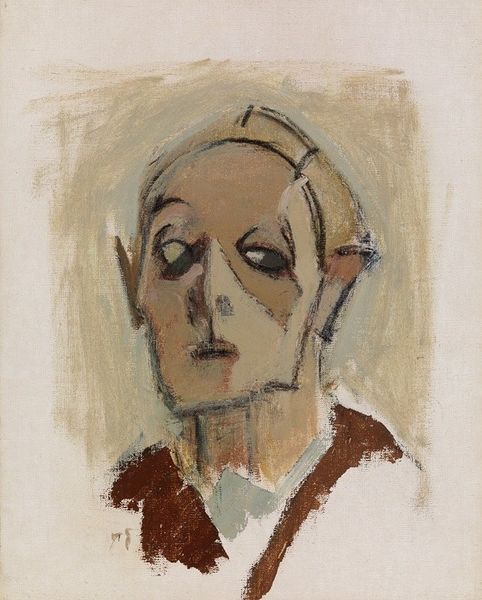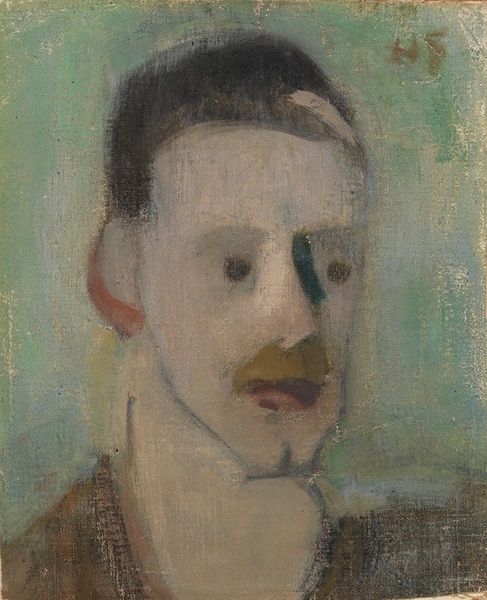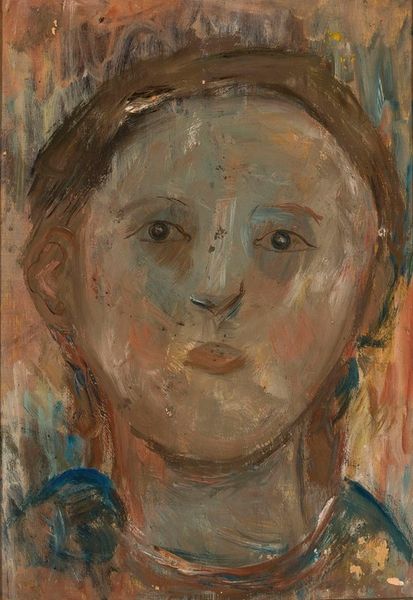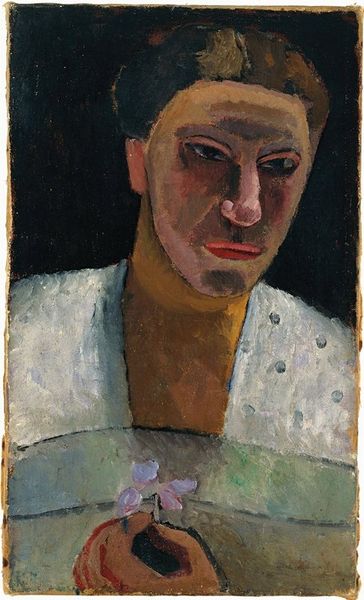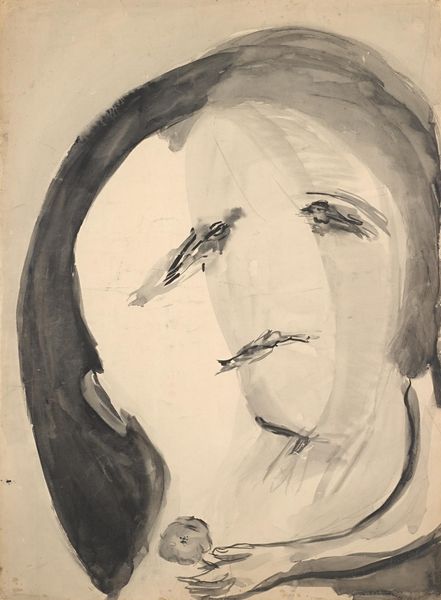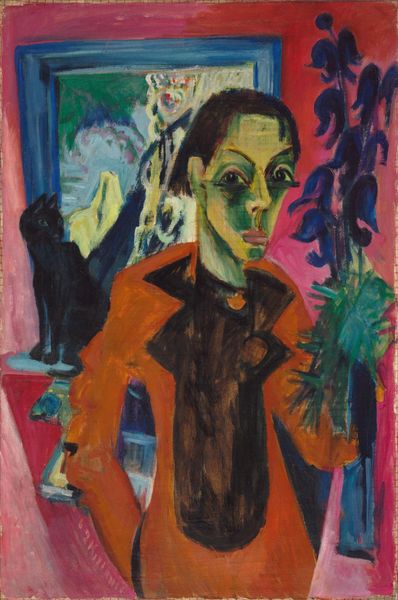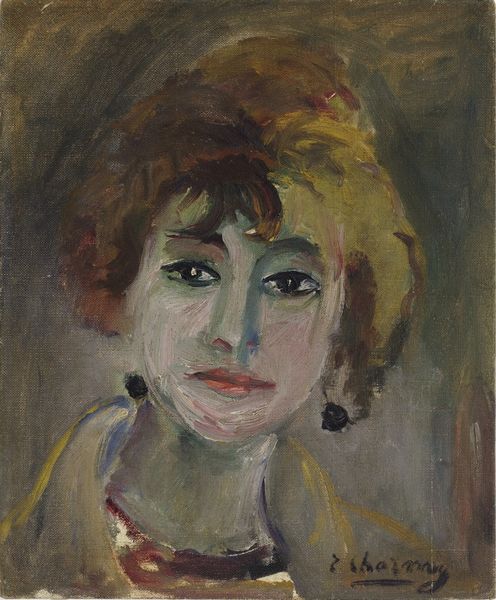
Copyright: Public domain
Editor: Here we have Helene Schjerfbeck's "Self-Portrait With Black Mouth," painted in 1939 using oil paints. The palette is quite muted, lending a certain melancholy to the piece. I am struck by how the artist simplified her features. What do you make of it? Curator: Immediately, I am drawn to the interplay between the figure and the ground. Schjerfbeck employs a limited color palette, focusing on the tonal variations to create depth. Observe how the flatness of the pink background pushes the figure forward, emphasizing its stark, almost gaunt, appearance. Editor: Yes, the starkness is very apparent. The black mouth and dark eyes also contrast strongly with the pale skin. Do you think that contributes to the work's meaning? Curator: Indeed. The geometric simplification of the face, combined with those almost vacant eyes, demands close inspection of her surface reality. The composition seems structured by subtle geometries, lending a sense of order even amidst the expressionistic distortion. Editor: The artist clearly wanted to express something beyond a literal depiction of herself. Curator: Precisely. This is more than mere representation; it’s a presentation of form that elicits feelings from the viewers. Look at the surface— the brushstrokes, though economical, create a tactile quality that is captivating. The bare canvas feels integral, too, part of the form. Editor: That’s fascinating. I had not considered how the materiality and geometry interacted so powerfully with the artist's expressive intention. Thanks for shedding light on the formalism at work here. Curator: A formalist exploration is helpful to our understanding. By acknowledging our focused perception and feelings toward her choices, we learn more about art.
Comments
No comments
Be the first to comment and join the conversation on the ultimate creative platform.

